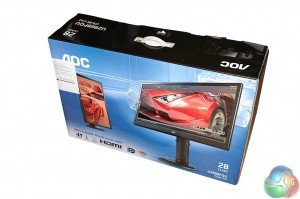
The AOC U2868PQU arrives in a full colour box, highlighting the monitor display and some specifications. The box weighs almost 11kg.
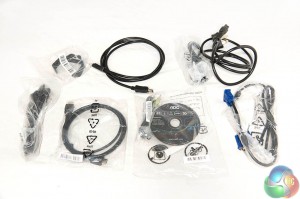
The bundle is extensive. AOC include an HDMI cable, DisplayPort cable, VGA cable, audio cables, software disc, cable clip and USB cable. Our review sample also shipped with a European and UK power cable.
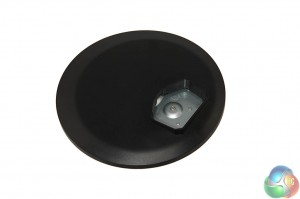
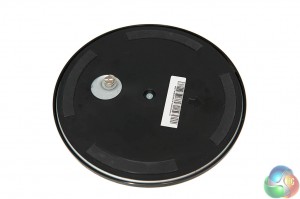
The AOC U2868PQU ships with the stand already fitted, and rotated along the length of the screen – exactly like the Asus PB287Q. The bases are different however. The Asus PB287Q stand is square shaped and a little bigger. The AOC base is circular, but attaches to the stand leg with the same clip based finger screw. We like the tool less setup, as it means you don't need to hunt for a screwdriver to set the screen up.
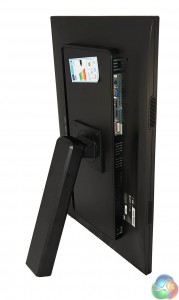
The monitor is already fitted to the arm, saving the user the hassle. The arm simply needs bolted into the base – which is tool less.
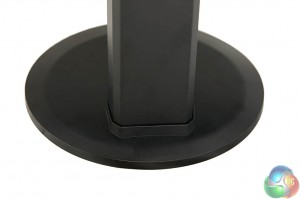
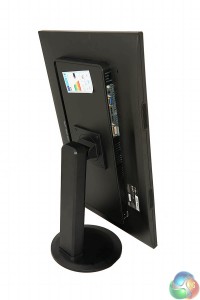
Fitting the base only takes a couple of seconds. The screen is actually very steady in operation and it didn't wobble at all on our desk. Fully assembled, the screen weighs around 8kg.
Mechanical design:
- Chassis Colors : Black
- Tilt : +24°~-5°
- Swivel : Yes
- Pivot : Yes
- Height Adjustment : Yes
- VESA Wall Mounting : 100x100mm
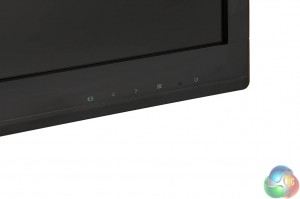
The AOC U2868PQU has a panel bottom right of the bezel. The Asus PB287Q has physical buttons around the back of the screen, but AOC have adopted a touch panel design. I discuss this in more detail on the next page of this review.
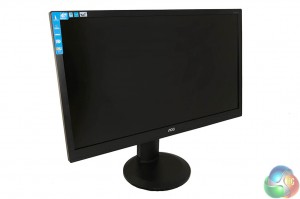
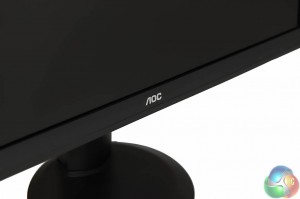
The AOC U2868PQU is a fairly plain looking screen, although it is inoffensive and well put together. The AOC logo takes center position below the panel – no other markings are visible.
The U2868PQU has two 3W stereo speakers installed. As we would expect they lack any kind of bass weight and have limited volume capabilities. Still, it is a helpful addition for some people and you can disable them if you want.
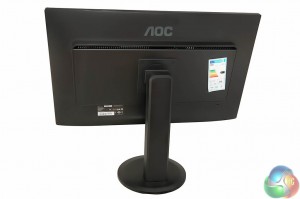
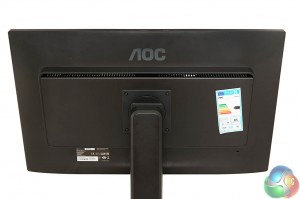
The screen is fully height adjustable, you push down and pull up with modest pressure on the panel to move it. It will also tilt, to suit a variety of desk and chair positions.
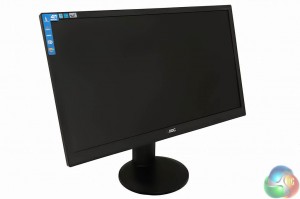
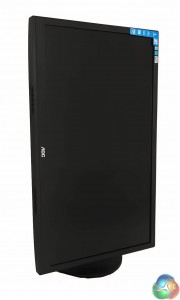
Rotating the screen is simple enough. pull up to maximum height and apply pressure on the side. Just ensure the cables have a little play before rotating.
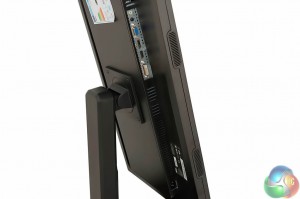
One side of the main rear panel has connectors for HDMI (MHL support included), VGA and DisplayPort connectors. There are also two 3.5mm audio jacks next to the video connectors. The power connector is on the other side of this panel. The AOC U2868PQU doesn't take a standard PC power cable, it is one of the smaller ‘8' shaped style power cables.
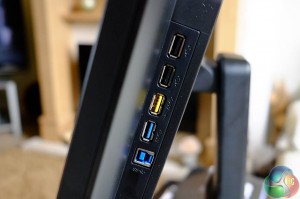
The other side of the panel is home to a four port USB hub (V3.0 and V2.0 ports), which is useful if you have a handful of devices on the desk. Surprisingly, the more expensive Asus PB287Q does not incorporate a USB hub – perhaps they felt it wasn't an important enough addition. Still, better with than without.
 KitGuru KitGuru.net – Tech News | Hardware News | Hardware Reviews | IOS | Mobile | Gaming | Graphics Cards
KitGuru KitGuru.net – Tech News | Hardware News | Hardware Reviews | IOS | Mobile | Gaming | Graphics Cards



Bought two of them this weekend !
Good deal, been debating between this and the ASUS one. not sure I would need the hub and I might get ASUS as I always buy ASUS stuff. still it would save me £100 to get more memory for my PC
I love AOC, already have one of their 27 inch screens, and I think this 4K screen is next on my list. I bet if they made an IPS 4K screen they could get it out for £1000, their prices are always fantastic.
I’ll wait until the GTX 1880 is released.
The Asus and AOC use the same underlying panel, both are 8 bit native, but use modulation to fake 10 bit.
You mention a ‘Asus U2868PQU’ on this page. You sure that’s not a typo?
Hi,
I recently purchased two U2868PQU monitors. I
connected one to my Win7 PC and one to a mac (both times via DP1.2). I get
4k@60Hz as expected. However, on both machines the monitor fails to
wake up once it goes on standby mode (The computer can be accessed
remotely, though). This issue is not present when I use an HDMI cable
(but I then get 4k only at 30Hz, as expected).
I contacted AOC about this issue but never received any answer (although they acknowledged my email).
I would be very interested if anyone has a clue on how to fix this.
Best,
-a-
What’s the name of the software to change your OSD from the desktop? Think it’s called i-something but I can’t find it anywhere!